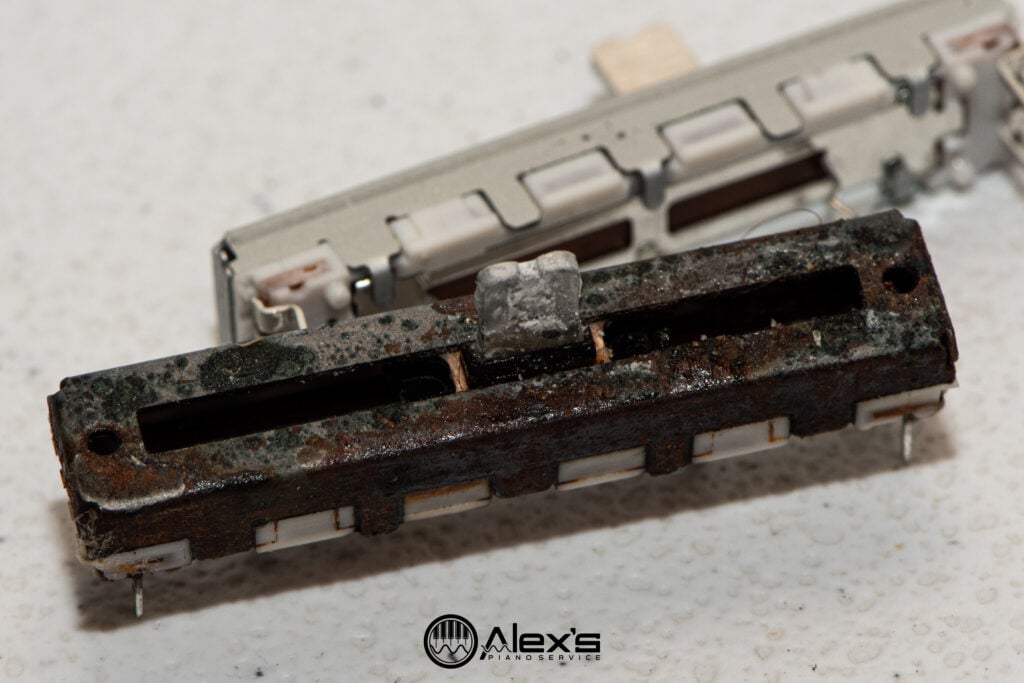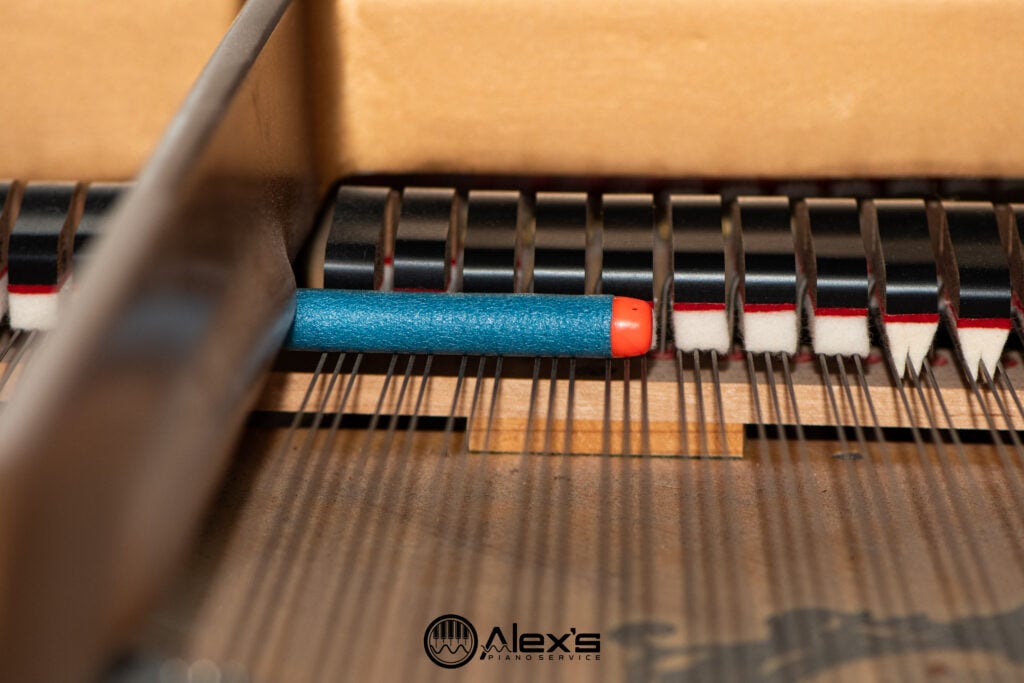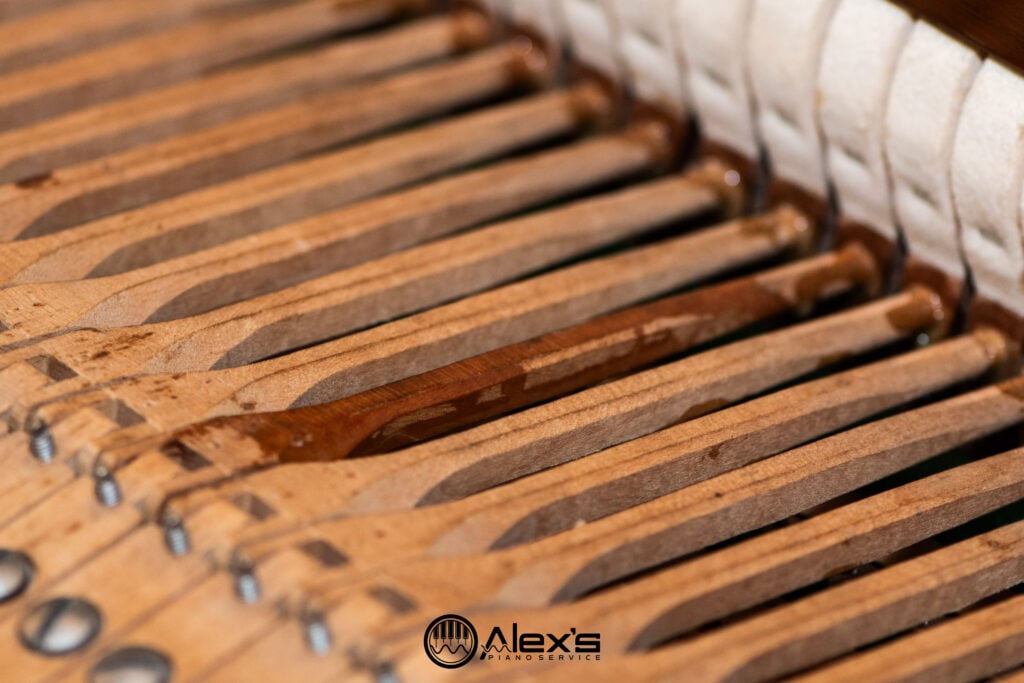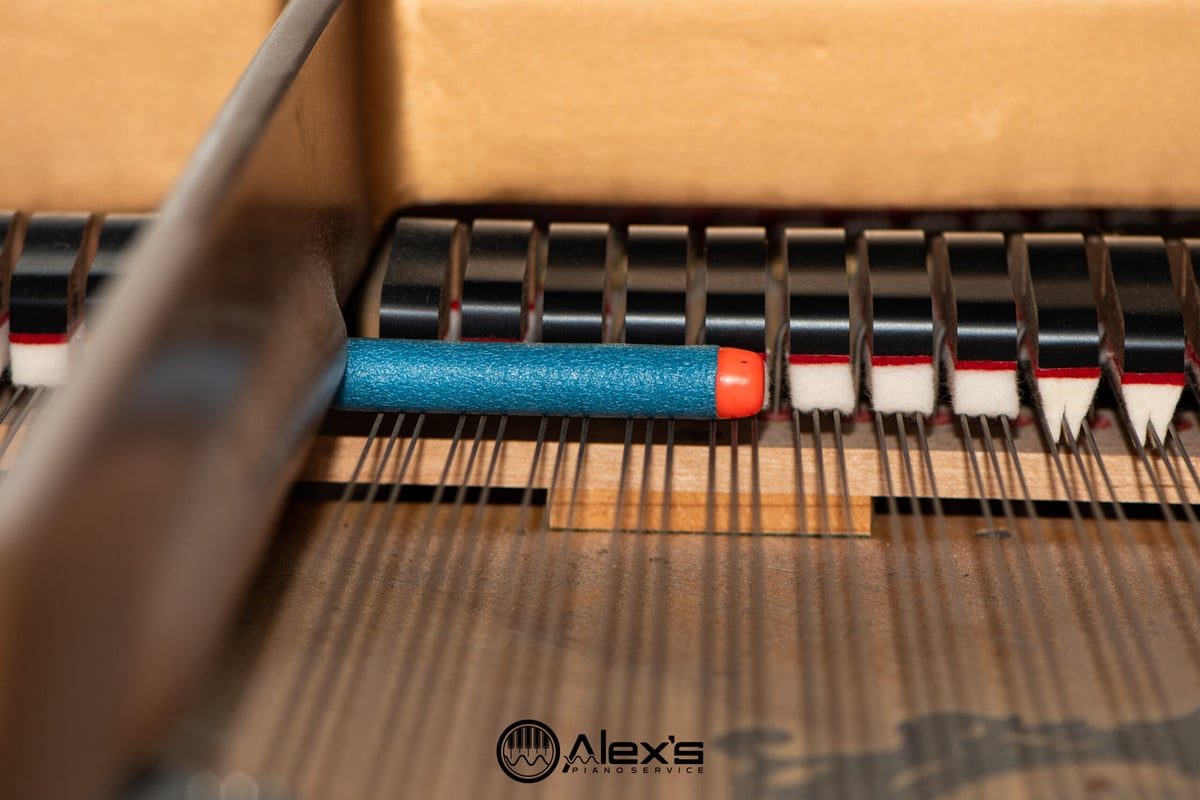Yamaha P-71: No Sound After a Spill
The customer initially reported spilling water in the keyboard. However, on inspection, the substance was oily. It had also wicked into the keyboard contacts and speakers. The most damaged component—and the reason the keyboard made no sound at all—was the volume slider. I removed the original and soldered in a replacement. I also replaced the contacts and the speaker. Then all was well!
Keep liquids and diffusers well away from the keyboard.
If a spill happens, power off immediately and unplug. Do not “test” it again until inspected.
Oil contamination travels. If you’re a technician, plan on replacing contact strips after such a spill. Even if they seem to work at the moment, rubber contacts can’t be trusted long-term after exposure to an oily spill.
See my digital piano FAQ for more on digital piano cleaning, care, and repair.

Buzzing on a Yamaha GB1: The Hidden NERF Dart
I’ve removed countless NERF darts throughout my career. In this case, the owners of the piano were complaining of a buzz, and it turned out to be a NERF dart sitting on top of the strings. It was perfectly hidden under the music rack, so it wasn’t visible during a casual look.
If you hear a buzz or rattle, remove the music rack and look straight down onto the strings and soundboard. Most of the piano buzzes I diagnose turn out to be sympathetic vibrations caused by loose screws or buzzing foreign objects.
If you’d like to clean your piano, see my piano cleaning guide for more information.

Pinblock Treatments Done Wrong
If the piano has a borderline pinblock, treating it with Hot Stuff (cyanoacrylate) can be an effective way to eke out a few more years of reliable use. I recommend this approach on my Piano Tuning FAQ page.
This piano’s pinblock was treated by a local technician. However, this technician did not use Hot Stuff, but instead chose a superglue purchased from a local hardware store. This was a mistake. If you treat the pinblock with a chemical solution, do not substitute glues other than Hot Stuff.
Second, this local technician did not remove the action before applying the treatment. It is mandatory that you remove the action in a grand piano before applying any pinblock treatment. In this case, cyanoacrylate dripped through the pinblock, contaminating the action and freezing multiple joints.

